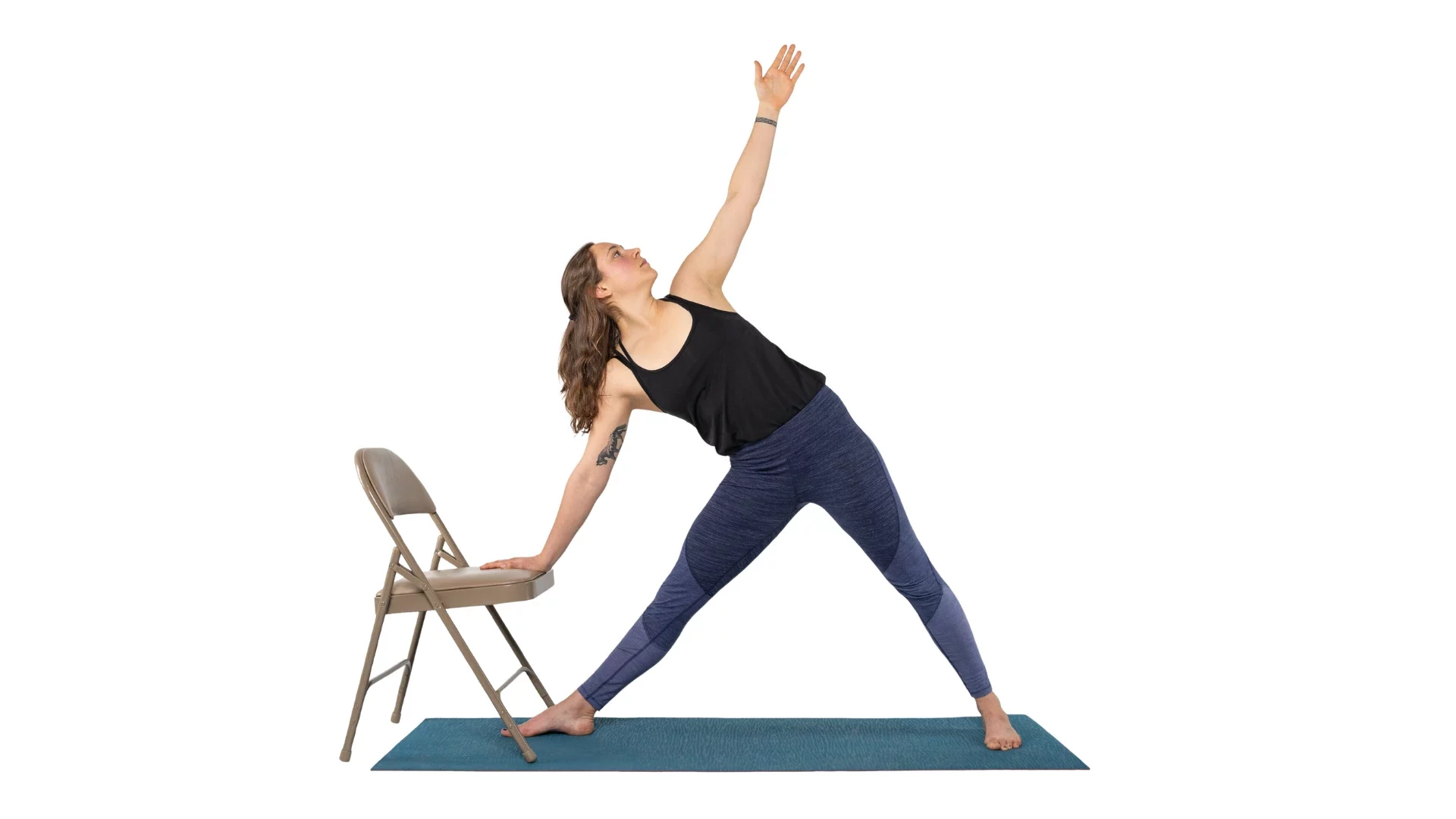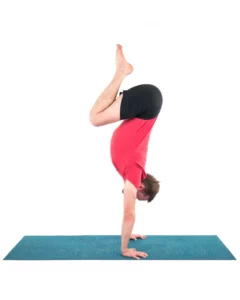Explore the Many Faces of Triangle Pose (Trikonasana)

Like all yoga poses, Triangle Pose has many (possibly endless!) variations, and yoga teachers are constantly inventing new ways to not only make this pose fit all types of bodies but to help teach all of the actions (and therefore create the desired benefits) of the pose. Here are some creative Triangle Pose versions to fit various body types.


All of the poses shown below achieve the function of the form. Once you’ve understood the function of the pose, try them all to see how the different variations feel and which one gives you the most benefit.
Try These 6 Triangle Pose Versions to Find the Best One(s) for You:
-
Hand-to-Shin Pose Trikonasana Variation

This Triangle Pose version is definitely the most versatile and accessible (no props required!). Place your hand on your shin, above or below the knee, as you extend sideways. Bring your hand lower on the shin toward the ankle to get a deeper stretch. I don’t recommend this variation if you tend to hyperextend your knees because the weight of the hand can make this worse. I also don’t recommend this variation if you have weak joints or if you have osteoporosis.
-
Hand-to-a-Block to Open up Your Trikonasana

This variation resembles the previous one, but using the block is safer for the knee joint because you can put weight on the block instead of your shin! This variation is good for most people who are tighter in the hips and need support under the hand to maintain healthy alignment. Depending on the person and the height of the block, this variation might be suitable if you have osteopenia or osteoporosis. However, because yoga blocks are generally quite low to the ground, they still require a fair range of motion in the hips, which is not suited to everyone. I would not recommend this variation if you have a lower back injury or if you have severe osteoporosis. If you have had hip replacement surgery and have recovered your normal range of motion, this would be a good variation, but not during recovery.
-
Hand-to-Chair: an Accessible Triangle Pose Version

This Trikonasana variation is, in a word, awesome. Using the chair creates safe support for the stretch, making it accessible to almost anyone. For extra stability and support (helpful if you are heavily pregnant or for older people who are afraid of falling), you can also do this pose with your back against a wall to make it safe, supported, and truly sweet.
-
Viniyoga Triangle Pose Variation

This is a fantastic variation if you have a more limited range of motion in your hips. It might apply if you are still recovering from a hip replacement, have osteoporosis, or for any other reason. In this Trikonasana variation, your feet remain parallel, and you stretch to the side. You lose the hamstring stretch, but there are other ways to get that. The side stretch is spot on!
-
Open Chain Triangle Pose Variation

This is a good option if you have strong joints, are generally injury-free, and want to add a strengthening aspect to your Trikonasana. Doing Triangle Pose “open-chain” (without the support of your hand) means that the side stretch also becomes load-bearing, so you are strengthening and stretching at the same time. This also creates a greater risk of injury, so I would not recommend this variation if you have lower back injuries, you have weak/injured joints or osteoporosis, or you are still recovering from a joint replacement. If you have hypermobile hips, I would not recommend this posture until you have some yoga experience and have built up your lower back and core strength. Otherwise, you are likely to “hang” into your hips and put extra pressure on the joints. However, this is an excellent variation for you once you have built up your strength and know-how to support your joints.
-
Fully Extended Triangle Pose Version

These versions are the ones you are most likely to see in books and magazines, and they are wonderful if you have a strong, flexible, and healthy body and no injuries or issues with your lower back, knees, or hips. Just make sure you retain the posture’s function as you work toward the form!
Note that if you have hypermobility, generally, the most extended versions of postures aren’t recommended.
Breanna from the Itinerant Yogini and YogaU staff



